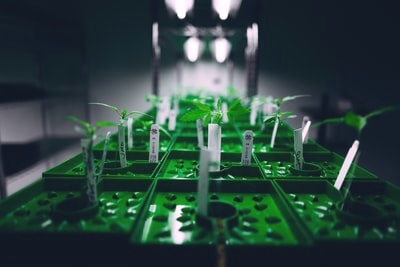State regulations are increasingly calling for the testing of cannabis flower and products for their potency, cannabinoid, terpene profiles and contaminants. As important as it is that these tests take place, it is equally important to ask, “How reliable are these tests?” The answer is “Not very”.
In 2010/2011, California NORML and Project CBD initiated a “Ring Test” to assess the accuracy of analytical cannabis testing laboratories. The results of this test, which included 10 laboratories, found that although most labs performed within acceptable limits, 3 of the 10 performed unacceptably on half of the tests. More recent investigations also found potentially dangerous inconsistencies in safety testing. So, why is this happening?
Lab Shopping
In the world of cannabis, tetrahydrocannabinol (THC) is king. Growers whose crop tests higher for THC can negotiate a better price for their produce. Therefore, growers are likely to get their crop tested by several labs, and go with the one that gives them the highest test results for THC. Alternatively, if the product has a cap on the amount of THC it can legally contain, companies are likely to shop around for the lowest THC tests.
Lab shopping is not a new phenomenon, but is likely to continue until a) THC stops becoming the most sought-after cannabinoid, and b) there is greater consistency across labs and the way they test products.
Cannabis is Not a Homogenous Product
The cannabis plant contains up to 150 cannabinoids and 220 terpenes. Moreover, different parts of a plant can contain different percentages of cannabinoids. For example, one part of the plant may contain 20% THC, another 15%.
To add to the complications, when making infused products like edibles, tinctures or topicals, it is extremely difficult to create a product that tests evenly for cannabinoid content throughout, especially when manufacturers are held to slim margins of error. This means manufacturers are burdened with providing what some may see as a perfect sample to laboratories.
Jumbled and Disjointed Regulations
As cannabis remains federally illegal, states are forced to come up with their own regulations. Consequently, different states have different standards for their labs. Multi-state operators have to be particularly careful about this, as there are a number of idiosyncrasies from state-to-state – advertising, compliance rules, the management of production facilities, and the structure between wholesalers, brands and retailers.
However, the jumbled and disjointed regulations are difficult to follow even for those operating in a single state. According to California’s Bureau of Cannabis Control (BCC), close to 20% of all products failed laboratory analysis. Of the nearly 11,000 samples tested, almost 2,000 fell short, with the most common reason for failure being inaccurate claims on the package label.
While it is fair to expect companies to stick to regulations and to ensure their products are appropriately labelled, there are some reasonable causes for complaint on the companies’ side, including:
- A lack of standardized processes when it comes to labeling and testing products.
- Extremely little room for error for edibles companies, especially when it comes to microdoses, where California’s 10% margin of error can put low-dose THC products in jeopardy of a matter of minute milligrams.
- Oils, fats and carbohydrates in infused products can make it difficult to achieve homogeneity among individual servings.
- Cannabis is a complex substance that contains hundreds of active compounds. These are very difficult to test for accurately, especially terpenes.
- The cost of testing can prove to be expensive for smaller companies.
Regulations are necessary, but they also need to be reasonable and achievable. Not doing so only puts more power in the hands of the black market.
What Can Be Done?
Other than federal legalization and standardized testing requirements nationwide, the only thing individual states can do is create better regulatory frameworks. These should be reasonable for companies to follow and meet consumer need for accurate labeling and safety at the same time. However, states should not make the regulations so stringent that the illicit market benefits.
This is no easy task but, in the place of federal regulation and oversight, is the only way states can ensure that cannabis legalization is more success than failure. Sadly, this standard has not yet been met. Perhaps the cannabis industry can develop their own set of standards, but the temptation to go lab shopping is still too high considering the current state of the market and the focus on THC.
The post Cannabis Lab Testing: Huge Improvements Still Need to Be Made appeared first on Cannabis Business Executive – Cannabis and Marijuana industry news.






